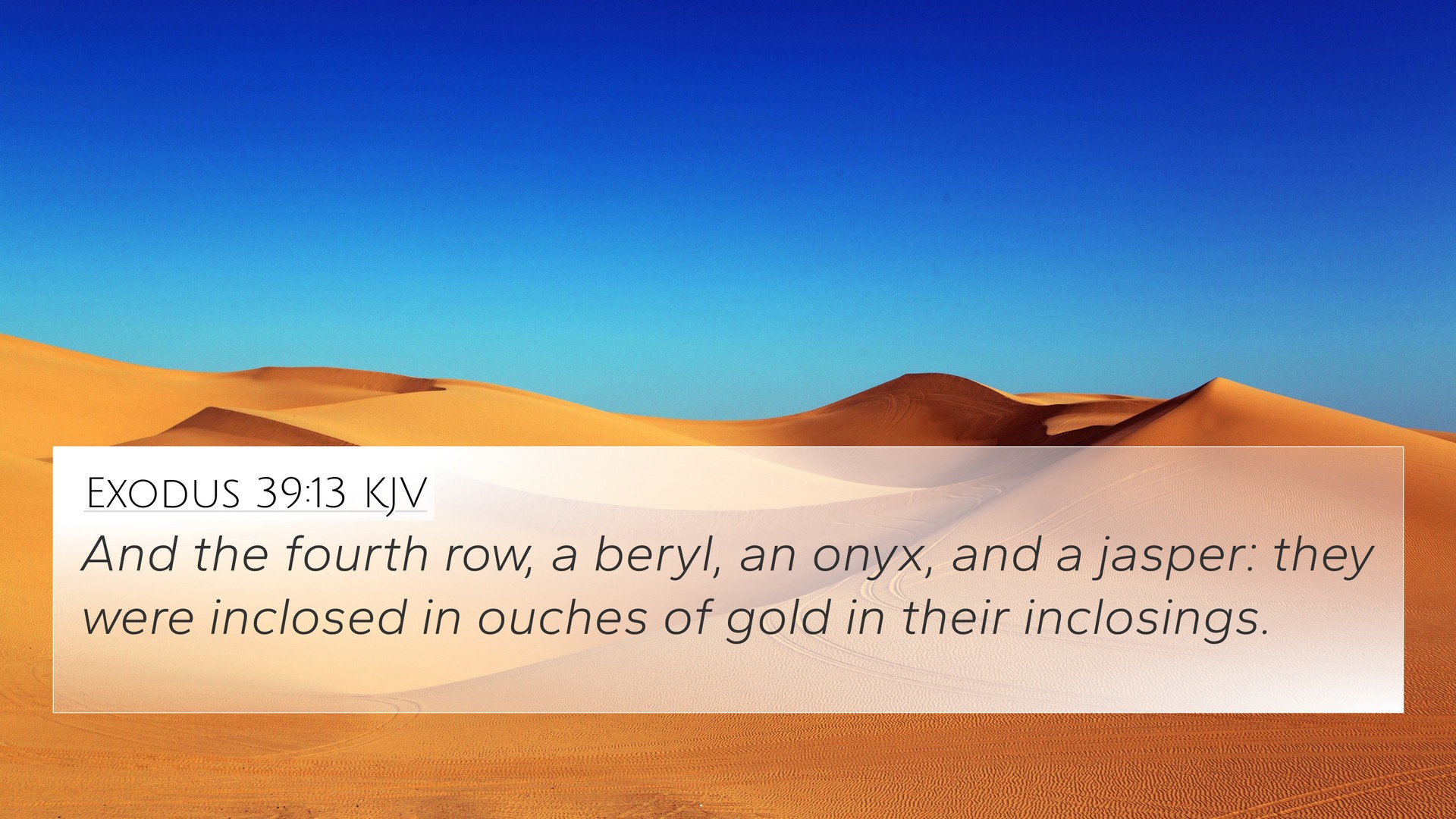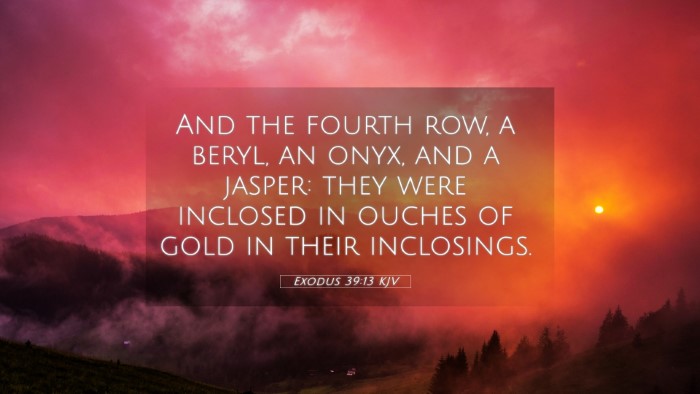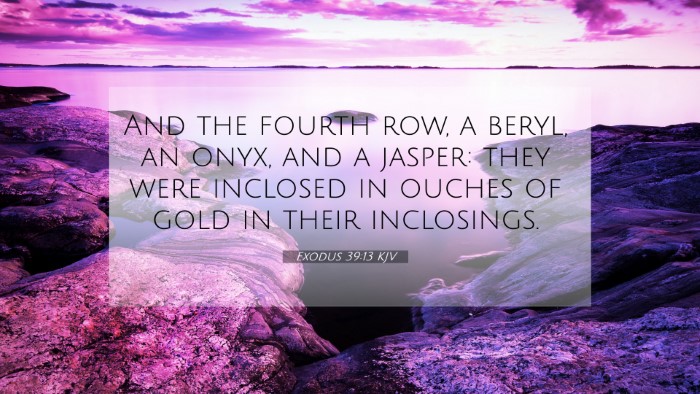Understanding Exodus 39:13
Exodus 39:13 states: "And the fourth row, a beryl, and an onyx, and a jasper: they were enclosed in gold in their inclosings." This verse describes part of the high priest's breastplate, illustrating the careful and detailed construction commanded by God for the priestly garments.
Summary of Meaning
This verse underscores the significance of the high priest's attire, symbolizing both beauty and the serious duty of representing the people before God. The precious stones represent the twelve tribes of Israel, indicating that each tribe has a unique and important place within God's covenant community.
Commentary Insights
- Matthew Henry: Henry emphasizes that the high priest's breastplate is a symbol of judgment and intercession. Each stone represents a tribe, reminding the priest of his duty to the people.
- Albert Barnes: Barnes notes the materials used—gold and precious stones—as symbols of the divine glory and the worth of spiritual responsibilities. He argues that the elaborate design was meant to attract attention not for vanity, but to honor God.
- Adam Clarke: Clarke provides insight into the significance of the specific stones and their colors, relating each to the tribes of Israel and their characteristics, thus connecting deeper themes of identity and divine promises.
Bible Verse Cross-References
This verse interplays with several others in the Biblical narrative, establishing a rich tapestry of connections:
- Exodus 28:15-21: The description of the breastplate and its significance in representing the tribes of Israel.
- Revelation 21:19-20: The foundations of the New Jerusalem, which recount the twelve stones, mirroring the importance of the tribes.
- 1 Peter 2:9: The idea of believers being a chosen people, emphasizing the fulfillment of the Israelite identity through Christ.
- Hebrews 5:1: The role of high priests and their representation of humanity before God draws a parallel to Christ as our high priest.
- Isaiah 49:16: God’s intimate relationship with His people, indicated by the metaphor of having their names inscribed on His hands, resonates with the symbolism of the breastplate.
- Matthew 5:14-16: The purpose of reflecting God's glory as the high priest reflected the tribes through the stones.
- Philippians 4:3: The communal aspect of believers linked to the tribes, where Paul speaks of fellow laborers in the faith.
- Numbers 1:52: The tribal divisions and arrangement of the Israelites, echoing the significance of the breastplate's stones.
- Jeremiah 33:7-9: The promise of restoration for Israel that affirms the enduring covenant relationship, akin to the permanence of the high priest’s duties.
- James 1:1: The twelve tribes scattered among the nations as a broader application of the significance of the individual tribes represented in the breastplate.
Thematic Connections
The themes of representation, intercession, and divine beauty found in this verse allow a broader scope for theological reflection:
- Intercession: The high priest’s role as a mediator between God and His people.
- Divine Glory: The use of precious materials reflects God's beauty and majesty.
- Covenant Identity: Each stone symbolizes the tribes, linking them to God's promises.
Bible Cross-Reference Tools
When studying this verse, one may utilize various tools for deeper exploration:
- Bible Concordance: Helps find connections and similar verses based on keywords.
- Bible Cross-Reference Guide: A systematic approach to discovering relationships between verses.
- Cross-Reference Bible Study: Engaging with the text through connections enhances understanding.
- Bible Reference Resources: Various studies and commentaries are available to provide insight and broader context.
Conclusion
The verse Exodus 39:13 serves as a crucial understanding of the high priest's role, reflecting themes that resonate throughout the Bible. Through careful examination of its connections and interpretations, believers can deepen their faith and understanding of God's holistic plan for His people.


